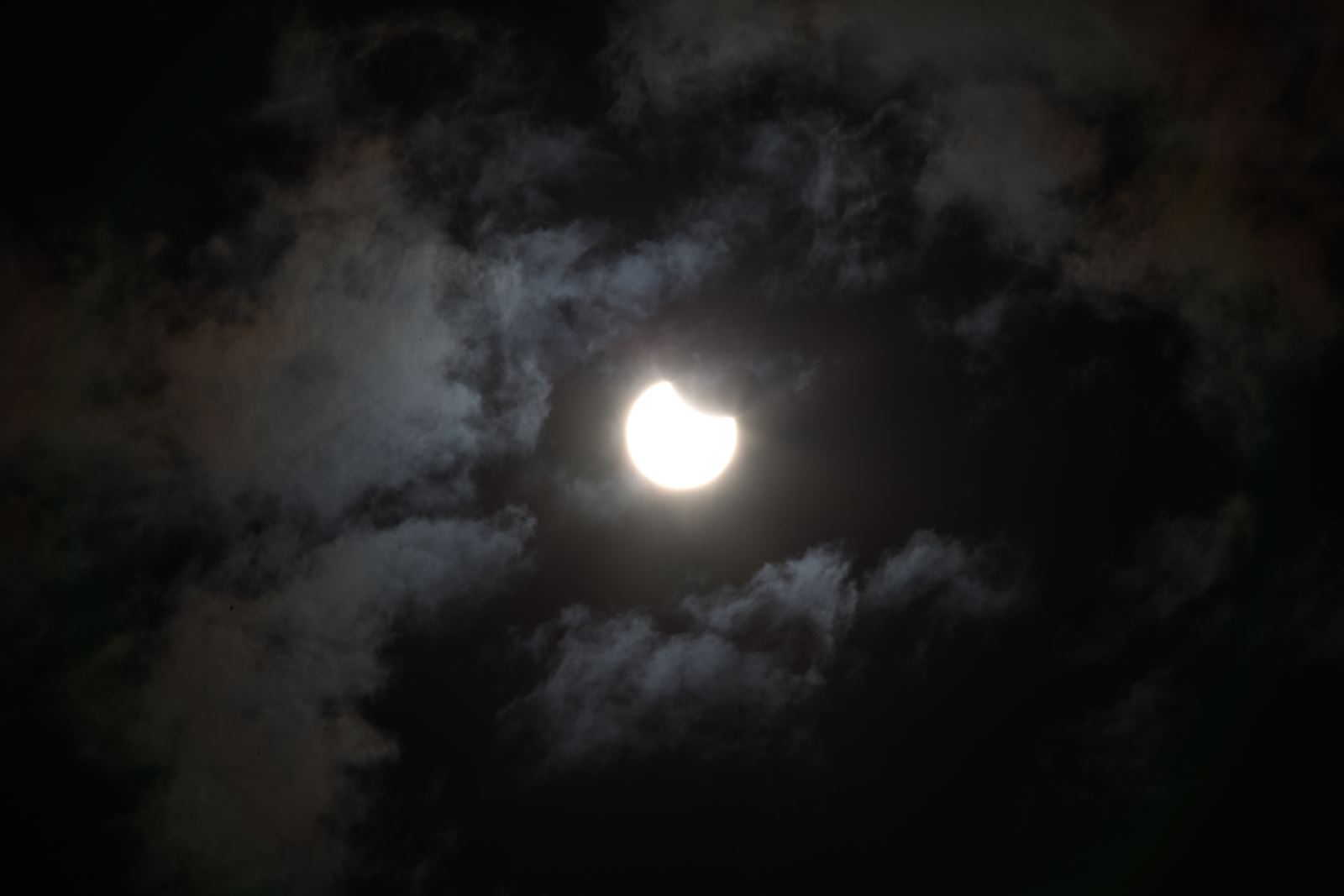“…and the Sun has perished out of heaven, and an evil mist hovers over all,”
Homer, The Odyssey (8th century BCE).
A partial solar eclipse was observed in the skies of Egypt on the morning of Tuesday, 4 January 2011. The eclipse was observed in most of Europe, North Africa and Central Asia. In Alexandria, where the eclipse began at 9:03 am and lasted for 3 hours, the moon covered approximately 55% of the Sun’s apparent diameter at greatest eclipse.
Solar eclipses are among the most magnificent natural phenomena; they occur when the moon passes between Earth and the Sun. The term “eclipse” is derived from the ancient Greek noun ékleipsis (ἔκλειψις), which means “the abandonment”, “the downfall” or “the darkening of a heavenly body”.
Solar eclipses are an extreme rarity within the universe at large; they are seen on Earth due to an accidental combination of circumstances. Many millions of years in the past, the Moon was too close to the Earth to precisely occlude the Sun as it does during eclipses today; and many millions of years in the future, it may be too far away to do so.
It is worth mentioning that on 29 March 2006, Egypt witnessed a total solar eclipse; one of nature's most spectacular phenomena. On that occasion, the eclipse witnessed in Alexandria was partial and lasted about two-and-a-half hours. The totality that lasted almost 4 minutes was visible in the area of Alsaloum.
Totality is a special, brief opportunity to glimpse the charming solar corona, the outermost layer of the Sun's atmosphere that appears as a pale, diffused glow surrounding the eclipsed Sun. The solar corona cannot be seen in broad daylight, as it is much fainter than the brilliance of the Sun's disc!

A total solar eclipse is a lifetime experience in which the Moon blocks the Sun completely; the air temperature falls; the sky darkens; even stars and planets appear in daytime; animals get confused: in the darkness of totality bats fly and birds sleep! Every year, 2-5 solar eclipses take place somewhere on our planet; but for a given location, several centuries may elapse between two successive total solar eclipses.
Solar eclipses have been observed throughout history, and had a profound impact on early cultures. Ancient eclipse records in China and Babylonia are believed to be over 4000 years ago. Recent research has demonstrated that solar eclipses were depicted in the fascinating mythology of ancient Egypt, and produced evidence that the ancient Egyptians observed solar eclipses over 4500 years ago.
Solar eclipses have been particularly significant to astronomers and historians as they enabled certain historical eras and events to be dated accurately. Astronomers also examined ancient eclipse records to measure the rate of Earth's spin about its axis over the past millenniums. In many ways, the ability to predict eclipses was an outgrowth of the pre-existing need to keep track of time.
References
Partial Solar Eclipse 2011 Report by Aymen Ibrahem
Further Reading
www.bibalex.org/Eclipse2006
*Published in the PSC Newsletter, Spring 2011 Issue.